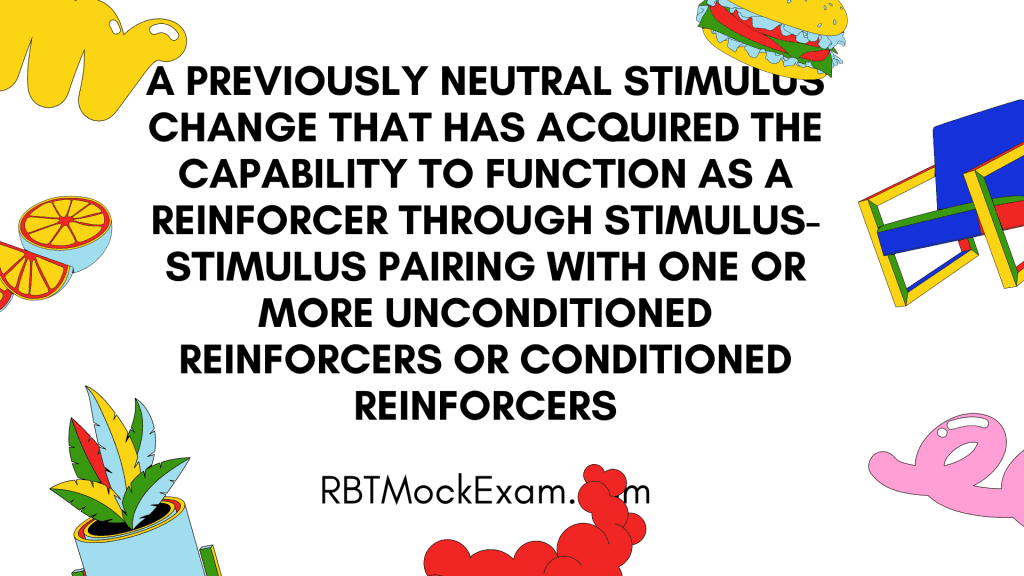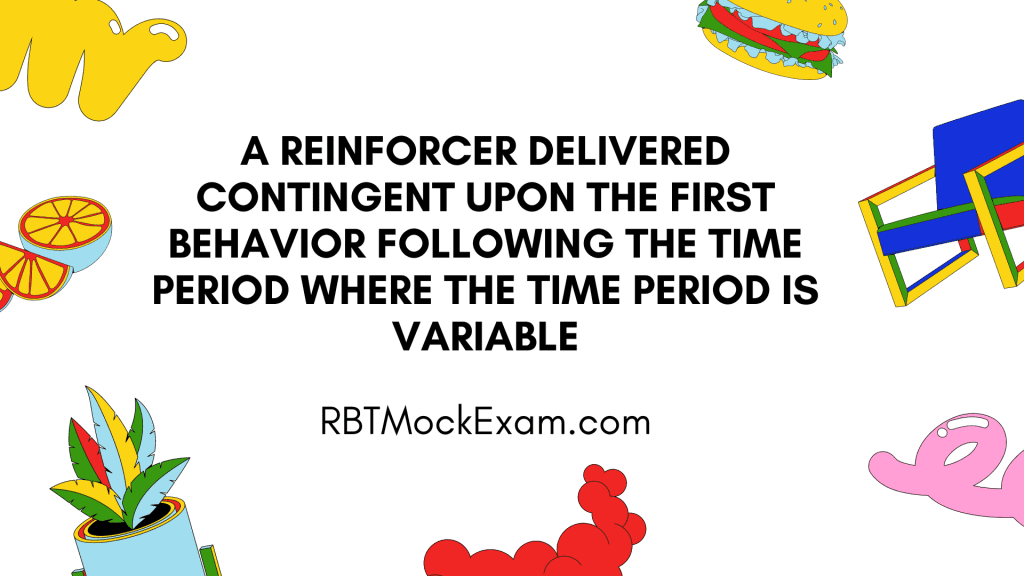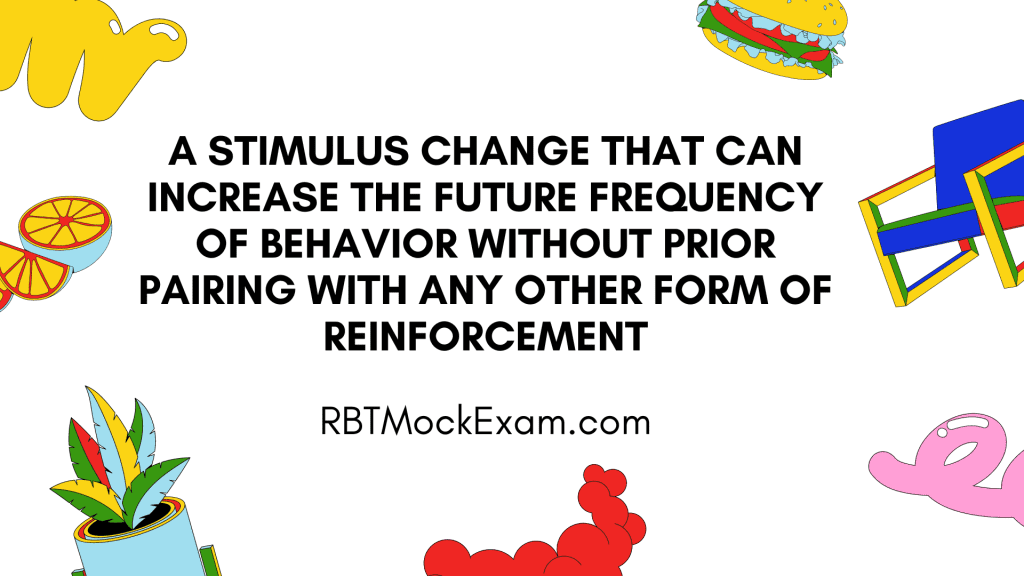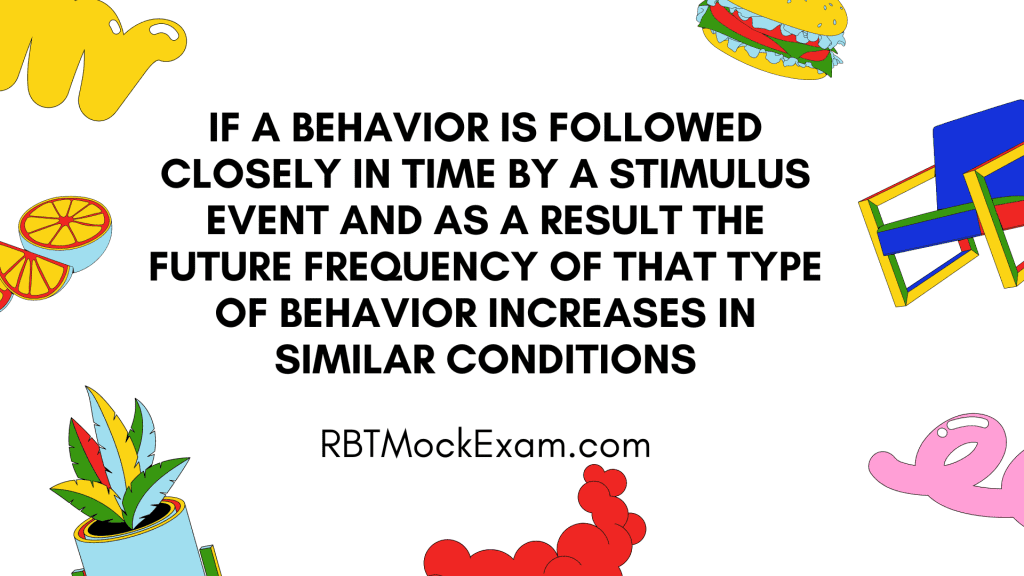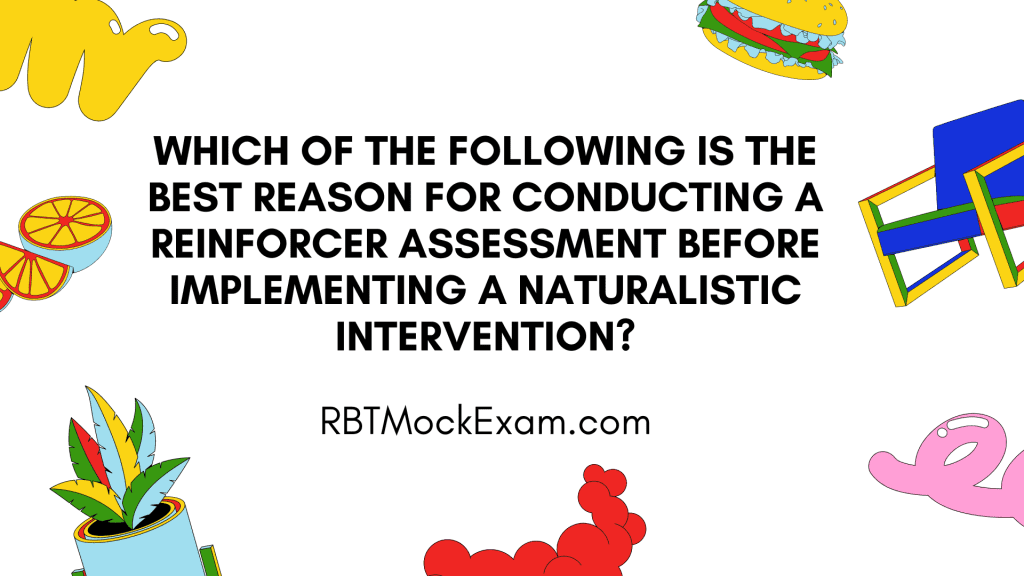Question: “A previously neutral stimulus change that has acquired the capability to function as a reinforcer through stimulus-stimulus pairing with one or more unconditioned reinforcers or conditioned reinforcers” best describes which of the following?
Options:
- Unconditioned Reinforcer
- Punisher
- Neutral Stimulus
- Conditioned Reinforcer
Correct Answer: 4. Conditioned Reinforcer
Explanation: A Conditioned Reinforcer (also known as a secondary reinforcer) is a previously neutral stimulus that acquires its reinforcing properties through association with one or more unconditioned or conditioned reinforcers. This process, known as stimulus-stimulus pairing, means that the neutral stimulus becomes associated with the primary reinforcer (such as food or water) or another conditioned reinforcer, thereby gaining the capability to increase the future frequency of the behavior it follows.
Practice Tests On This Question
- RBT Practice Exam
- RBT Practice Test #1
- RBT Practice Exam 75 Questions
- RBT Practice Exam 85 Questions
Examples of Conditioned Reinforcers
- Money:
- Perhaps the most ubiquitous conditioned reinforcer in modern society. Money itself has no inherent value but is reinforcing because it can be exchanged for primary reinforcers and other desirable items or experiences.
- Praise and Social Approval:
- Words of encouragement, applause, or a thumbs-up gesture can become powerful reinforcers, especially in social species like humans.
- Grades and Academic Awards:
- In educational settings, grades and honors serve as conditioned reinforcers, associated with future success and social approval.
- Tokens in Token Economies:
- Used in various settings (e.g., classrooms, psychiatric facilities), tokens gain reinforcing properties by being exchangeable for desired items or privileges.
- Clicks or Whistles in Animal Training:
- Often used in conjunction with primary reinforcers, these sounds become reinforcing themselves in training scenarios.
- Video Game Points or Achievements:
- In gaming, arbitrary point systems or achievement badges become reinforcing through association with progress and status.
- Employee Recognition Programs:
- “Employee of the Month” titles or similar recognitions serve as conditioned reinforcers in work environments.
- Brand Logos or Status Symbols:
- Certain brands or luxury items can act as reinforcers due to their association with social status and quality.
- Completion of Tasks (e.g., checking items off a to-do list):
- The act of marking tasks as complete can become reinforcing, associated with a sense of accomplishment.
- Religious or Spiritual Symbols:
- Objects or practices associated with spiritual beliefs can become reinforcing due to their connection with inner peace or divine approval.
- Likes and Followers on Social Media:
- These digital indicators have become powerful conditioned reinforcers in the age of social networking.
- Loyalty Program Points:
- Points accumulated in customer loyalty programs act as reinforcers, associated with future rewards or discounts.
- Certifications or Degrees:
- These serve as conditioned reinforcers in professional development, associated with career advancement and increased earning potential.
- Specific Sounds or Music:
- For instance, the sound of a slot machine paying out can become a reinforcer in gambling contexts.
- Stickers or Gold Stars:
- Often used with children, these simple visual markers can become powerful reinforcers when consistently paired with praise or privileges.
It’s important to note that the effectiveness of these conditioned reinforcers can vary greatly among individuals and contexts. Depending on personal history, cultural background, and current circumstances, what serves as a powerful reinforcer for one person might have little effect on another.
Understanding this variability is crucial for effectively applying reinforcement principles in various real-world situations.

